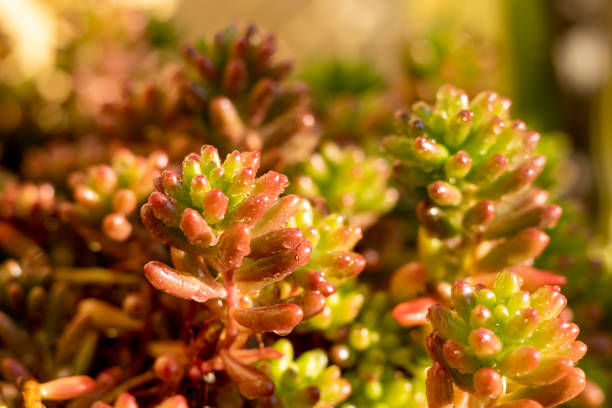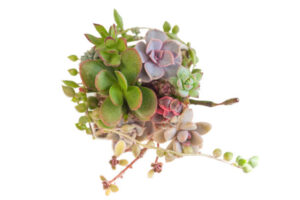Sedum Rubrotinctum: The Rosy Cheeks Succulent
Introduction
In the enchanting world of succulents, one particular gem stands out for its unique charm and delightful hues. Meet Sedum rubrotinctum, affectionately known as the “Rosy Cheeks” succulent. With its plump, jelly bean-shaped leaves and a captivating transformation of color that mimics blushing cheeks, this plant has become a favorite among succulent enthusiasts. In this exploration of “Sedum Rubrotinctum: The Rosy Cheeks Succulent,” we unravel the secrets of caring for this resilient beauty, offering insights, tips, and the joy that comes with cultivating a succulent that wears its rosy hues with pride.

Embracing the Rosy Cheeks Aesthetic: A Visual Delight
Sedum rubrotinctum earns its endearing nickname due to the delightful play of colors on its leaves. The fleshy, plump leaves start off as a vibrant green, transforming into shades of pink, red, and even purplish tones when exposed to bright sunlight. This charming color evolution gives the impression of rosy cheeks, adding an element of visual delight to any succulent collection or garden.

Ideal Growing Conditions: Nurturing Rosy Beauty
1. Sunlight Requirements: The Rosy Cheeks succulent thrives in bright, indirect sunlight. While it can tolerate some direct sunlight, it’s essential to provide protection during the hottest part of the day, especially in warmer climates.

2. Well-Draining Soil: Like most succulents, Sedum rubrotinctum prefers well-draining soil to prevent waterlogging. A mix designed for cacti and succulents or a homemade blend with added perlite or sand works well to ensure proper drainage.

3. Watering Wisdom: While these succulents are known for their ability to withstand drought, they still require regular watering. Allow the soil to dry out completely between watering sessions, adjusting the frequency based on environmental conditions and the plant’s specific needs.

4. Temperature Tolerance: Rosy Cheeks succulents are resilient to a range of temperatures. They can endure mild frost but should be protected from prolonged exposure to freezing conditions. Ideally, keep them in environments where temperatures stay above 20°F (-6°C).

Challenges and Solutions: A Resilient Companion
Despite its hardiness, the Rosy Cheeks succulent may encounter common succulent challenges, such as pests or overwatering. Here are simple solutions:
1. Pest Vigilance: Look for common succulent pests like mealybugs or aphids. Insecticidal soap or a mixture of water and mild dish soap can help control these unwanted visitors.
2. Overwatering Caution: If you observe signs of overwatering, such as mushy or discolored leaves, adjust your watering routine. Allow the soil to dry out completely before the next watering session.
Conclusion: The Endearing Allure of Rosy Cheeks
As you welcome the Rosy Cheeks succulent into your gardening repertoire, you invite a playful dance of colors and a resilient companion into your green space. With its charming aesthetic, easy care routine, and propagation possibilities, Sedum rubrotinctum is not just a plant; it’s a delightful experience. Nurture your Rosy Cheeks succulent, witness its captivating color transformations, and revel in the joy of cultivating a succulent that graces your space with the endearing allure of rosy cheeks.




















































